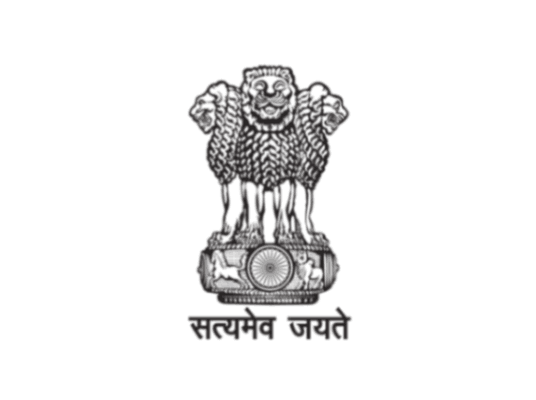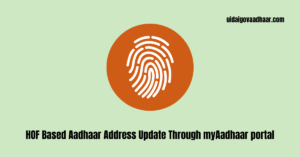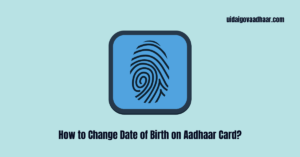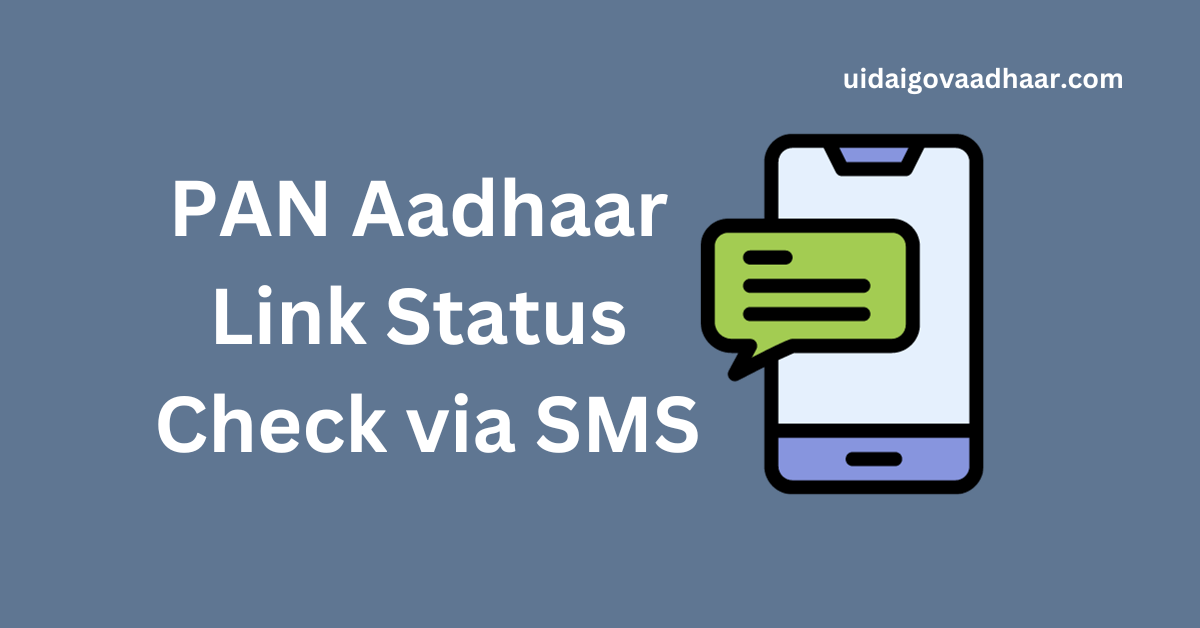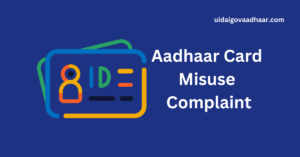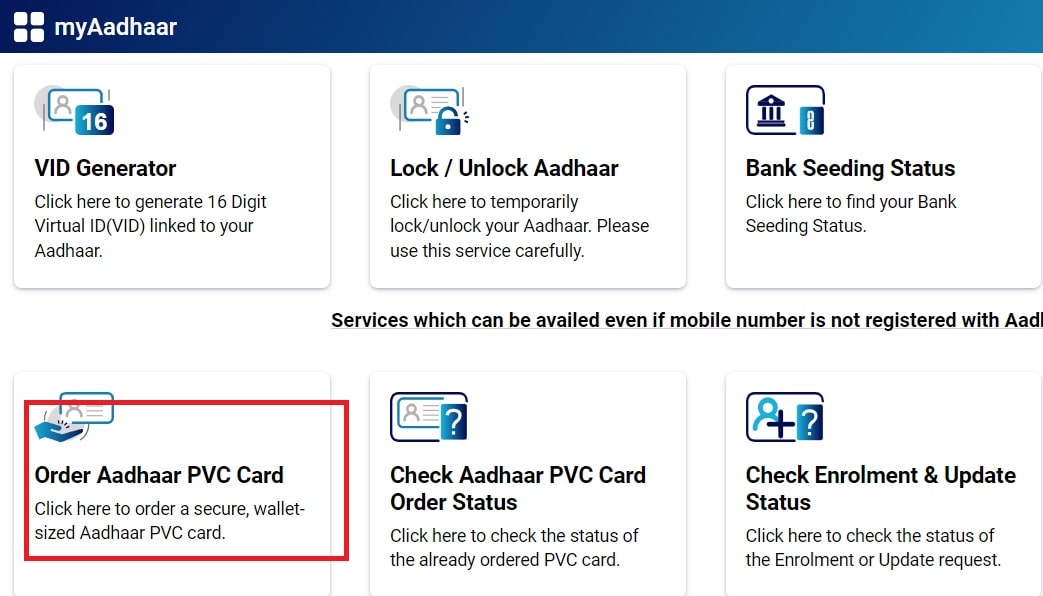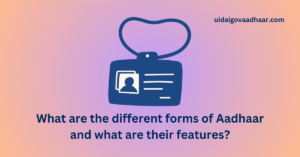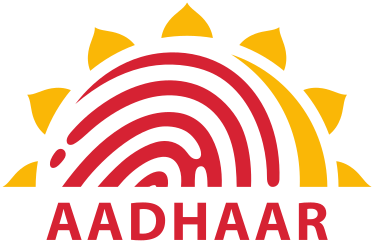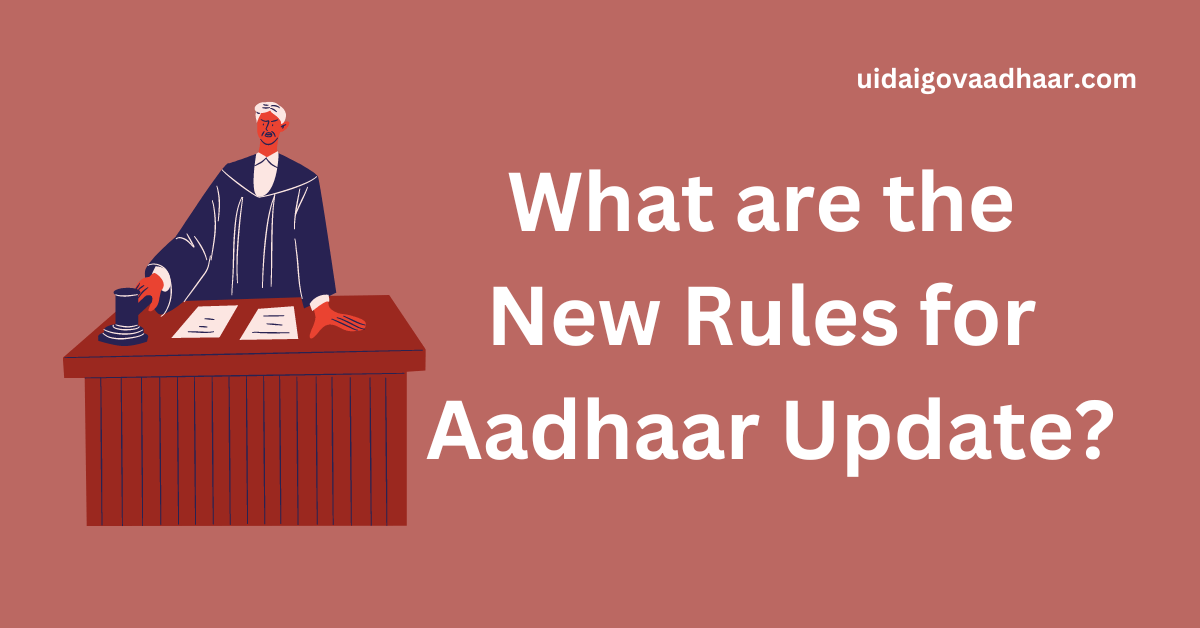 What are the New Rules for Aadhaar Update? What are the New Limits on the Number of Updates of the Aadhaar Card? What is the Helpline Number for Support?
What are the New Rules for Aadhaar Update? What are the New Limits on the Number of Updates of the Aadhaar Card? What is the Helpline Number for Support?
Aadhaar, a 12-digit unique identification number issued by the Unique Identification Authority of India (UIDAI), has become a vital part of every Indian resident’s life. From opening bank accounts, filing tax returns, obtaining passports and driving licenses to accessing welfare schemes and benefits, Aadhaar has emerged as the single identity proof for availing an array of services.
As of 31 January 2023, around 135 crore Aadhaar numbers have been generated in India by UIDAI. However, with extensive use of Aadhaar-based services, the instances of misuse of personal information and identity fraud have also increased over the years. To enhance security and streamline the updation process, the UIDAI keeps updating the rules and regulations around Aadhaar updation periodically.
What are the New Rules for Aadhaar Update?
Let us take a look at some of the key rules around how and when you can update details in your Aadhaar card:
1. Limit on Number of Updates Allowed
Earlier, there was no bar on how many times an individual could update their information like name, date of birth, gender or address in Aadhaar. However, now limits have been imposed by UIDAI on how many times you can change these fields.
- Name can be updated only twice. After two successful name changes, further requests have to be routed through the UIDAI’s regional offices.
- Date of Birth can only be updated once. Any subsequent changes would be treated as exceptions and can only be done at UIDAI’s regional offices.
- Gender can also be updated only once. The second change has to be handled as an exception case via UIDAI’s regional office.
- There is no limit on how many times an individual can update their address in Aadhaar.
This rule has been brought to discourage the misuse of unlimited updation facility by unscrupulous elements. All requests for changes beyond the set limit have to go through exception handling at UIDAI’s regional offices.
Also Read: How Many Times Can We Change Details in Aadhaar Card?
2. Mandatory Biometric Update at 13 and 18 years
As per the latest regulations, children enrolled under Aadhaar before the age of 5 years need to update their biometrics compulsorily when they turn 5 and 15 years old.
This is because biometrics of small children keep changing as they grow up and need to be updated periodically. There is no charge for biometric update before the child turns 15 years.
Further, all Aadhaar holders need to go for mandatory biometric update when they turn 18 years old. This helps in enhancing security and preventing misuse when a person turns adult and starts using Aadhaar widely for financial transactions and high-value services. A fee of Rs 100 is chargeable for the mandatory biometric update at 18 years.
Read Here: How to File an Aadhaar Related Complaint Online?
3. Document Update Notification via SMS
Earlier, the onus was on the Aadhaar holder to periodically check if their updated documents have been uploaded or if any further action was needed from their end. However, now UIDAI sends SMS notifications as soon as the resident’s documents for Aadhaar update are uploaded.
This ensures that the user is informed about the status of their update request. If any action is needed, like providing additional documents, they can do so promptly based on the notification. This prevents delays or rejection of update requests due to lack of information.
Read Here: Is It Mandatory to Update Aadhaar Card Details Every 10 Years?
4. Virtual ID for More Security
To enhance privacy and security of Aadhaar details, UIDAI has introduced the concept of Virtual ID. It is a randomly generated 16-digit temporary number that can be used in place of the actual 12-digit Aadhaar number for authentication and verification purposes.
Virtual ID can be generated multiple times, thereby reducing the risk of Aadhaar number getting exposed. Organizations using Aadhaar services have also been directed to accept Virtual IDs. Users can generate or retrieve their Virtual ID through the UIDAI portal.
Read Here: What are the New Rules for Aadhaar Update?
5. Geo-location for Biometric Authentication
Earlier, biometric devices used for Aadhaar authentication only captured basic details like date, time and device ID. However, now UIDAI has directed that geo-location or location coordinates of the device should also be captured at the time of biometric authentication.
This additional data point will help in identifying the location where a particular device was used for biometric-based Aadhaar transaction. This will add transparency and help prevent misuse of authentication facilities. The new GPRS-enabled authentication devices will start capturing geo-location data soon.
Read Here: Is Aadhaar No Longer Valid as Date of Birth Proof by EPFO?
6. XML Based scanned Documents
To simplify the process of document submission for Aadhaar updates, UIDAI has introduced XML based document scanned images. This means the user only needs to scan the supporting documents and submit the digitally signed XML files rather than submitting physical photocopies.
This makes document submission and verification faster and more convenient for both the users as well as officials. The 8MB XML file can be uploaded directly on the UIDAI portal while submitting update requests online.
Read Here: What are the Documents Required for Aadhaar Card Enrollment and Updates?
7. Aadhaar Locking and Unlocking Online
A new safety feature introduced by UIDAI is the online locking and unlocking facility for Aadhaar numbers. If a user suspects misuse or apprehensions around sharing of Aadhaar details, they can simply log on to the UIDAI portal and lock their Aadhaar number instantly.
Once locked, no one can use the Aadhaar number for authentication or verification. It remains locked till the time the user chooses to unlock it by using OTP or biometric authentication on UIDAI’s portal.
This empowers the users to exercise more control over their Aadhaar to prevent unauthorized use. The online locking/unlocking service discourages misuse while also reducing dependency on UIDAI call centers or officials.
Read Here: Aadhaar Card Correction Form
8. 24×7 Toll-Free Helpline for Support
To provide better customer support related to Aadhaar services, UIDAI has launched a 24×7 toll free helpline number – 1947. Any queries, complaints or grievances related to Aadhaar can be reported on this number from anywhere in India.
The interactive voice response system provides the user with relevant information about Aadhaar or directs the call to the concerned authority. This has significantly eased public access to important information and support for Aadhaar related services.
Read Here: Aadhaar Card for NRIs
Aadhaar Enrolment and Updation Forms
The Unique Identification Authority of India (UIDAI) has introduced new forms for Aadhaar enrolment and updation of Aadhaar details. These forms replace the old ones and are designed to make the process simpler and gather the necessary information more efficiently.
Forms for Adults (18 Years and Above)
Form 1: For Residents and NRIs with Indian Address
This form is to be used by:
- Indian residents aged 18 years and above
- Non-Resident Indians (NRIs) aged 18 years and above, with proof of an Indian address
Form 1 can be used for both:
- New Aadhaar enrolment
- Updating existing Aadhaar details
Date of Birth Specifications
- If the applicant declares their age or provides an approximate date of birth without documentary proof, only the year of birth will be printed on the Aadhaar card.
- To have the complete date of birth printed, the applicant must provide documentary evidence (such as a birth certificate) as proof.
Enrolment/Updation Process The process can be completed in two ways:
- Document Verification: The applicant provides required documents for verification.
- Head of Family (HoF) Confirmation: The HoF provides their Aadhaar details and signs Form 1 to confirm the applicant’s details.
Additional Requirements for NRIs
- NRIs must provide an email ID in the form.
- If a non-Indian mobile number is provided, no SMS/text message will be sent to that number.
- For NRIs, only a valid Indian passport is accepted as Proof of Identity (POI).
Form 2: For NRIs with Address Outside India
- NRIs who have an address proof outside India should use Form 2 for enrolment or updation.
Forms for Children
Form 3: For Children (5-18 Years) with Indian Address
This form is to be used for Aadhaar enrolment or updation of:
- Resident children aged between 5 and 18 years
- NRI children aged between 5 and 18 years, with an Indian address
Form 4: For NRI Children (5-18 Years) with Foreign Address
NRI children aged between 5 and 18 years, with an address outside India, should use Form 4 for enrolment or updation.
Form 5: For Children (Below 5 Years) with Indian Address
This form is for Aadhaar enrolment or updation of:
- Resident children aged below 5 years
- NRI children aged below 5 years, with an Indian address
Form 6: For NRI Children (Below 5 Years) with Foreign Address
NRI children aged below 5 years, with an address outside India, should use Form 6 for enrolment or updation.
Forms for Foreign Nationals
Form 7: For Resident Foreign Nationals (18 Years and Above)
Resident foreign nationals aged 18 years and above should use Form 7 for Aadhaar enrolment or updation. This form requires details such as:
- Foreign passport
- Overseas Citizen of India (OCI) Card
- Valid long-term visa
- Indian visa Providing an email ID is mandatory.
Form 8: For Resident Foreign Nationals (Below 18 Years)
Resident foreign nationals aged below 18 years should use Form 8 for Aadhaar enrolment or updation.
Cancellation of Aadhaar
Form 9: Cancellation of Aadhaar on Attaining 18 Years
- The UIDAI has introduced Form 9, which enables individuals to cancel their Aadhaar number upon attaining the age of 18 years.
- These new forms are designed to streamline the Aadhaar enrolment and updation process for different categories of applicants, ensuring that the necessary information is collected accurately and efficiently.
Conclusion
Regularly updating the security and usage guidelines around Aadhaar helps in controlling misuse while also improving citizen experience. The latest regulations on number of updates allowed, mandatory biometric updates, Virtual ID, document scan facilities etc. have had far reaching impact.
Aadhaar has emerged as the singular identity and address proof for citizens to seamlessly access welfare schemes and services. The enhancements in the update process help in preserving its integrity while retaining public trust. However, more work is needed to spread awareness on responsible usage as well as safeguards introduced by UIDAI from time to time.
